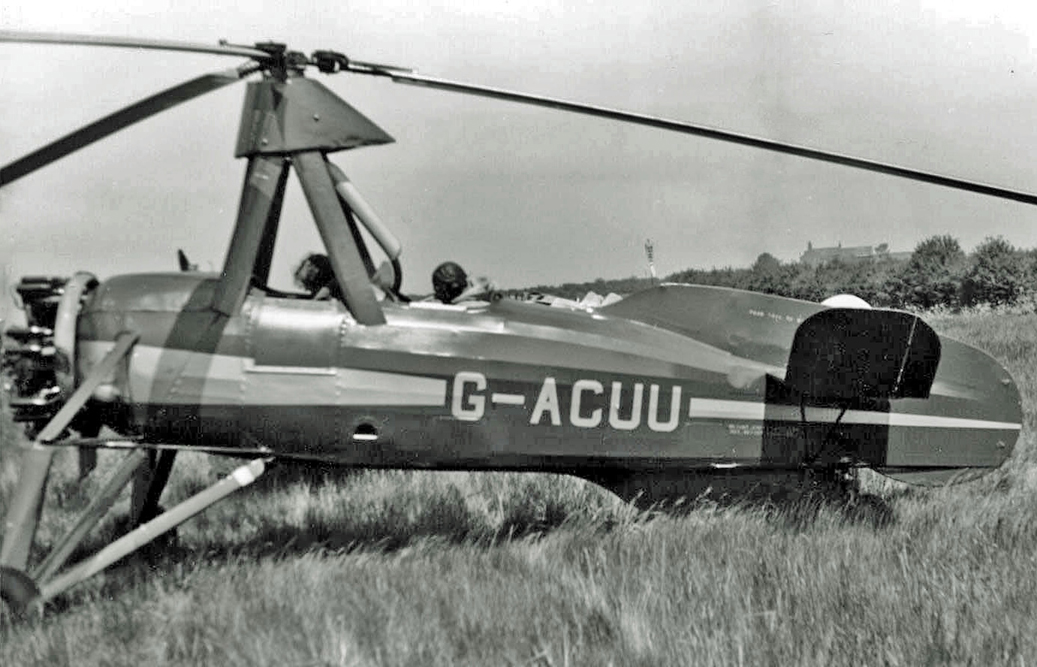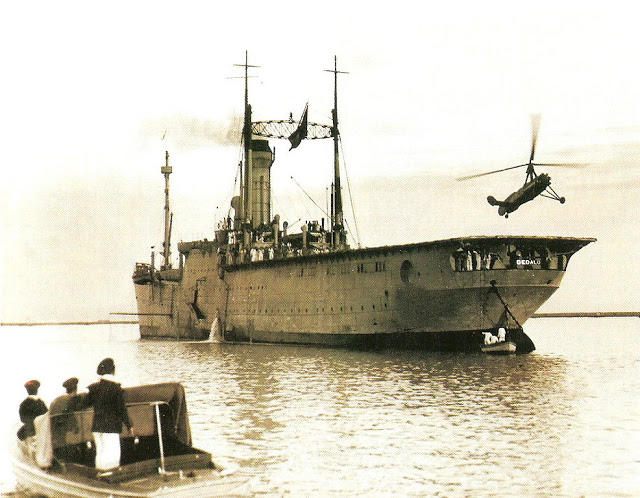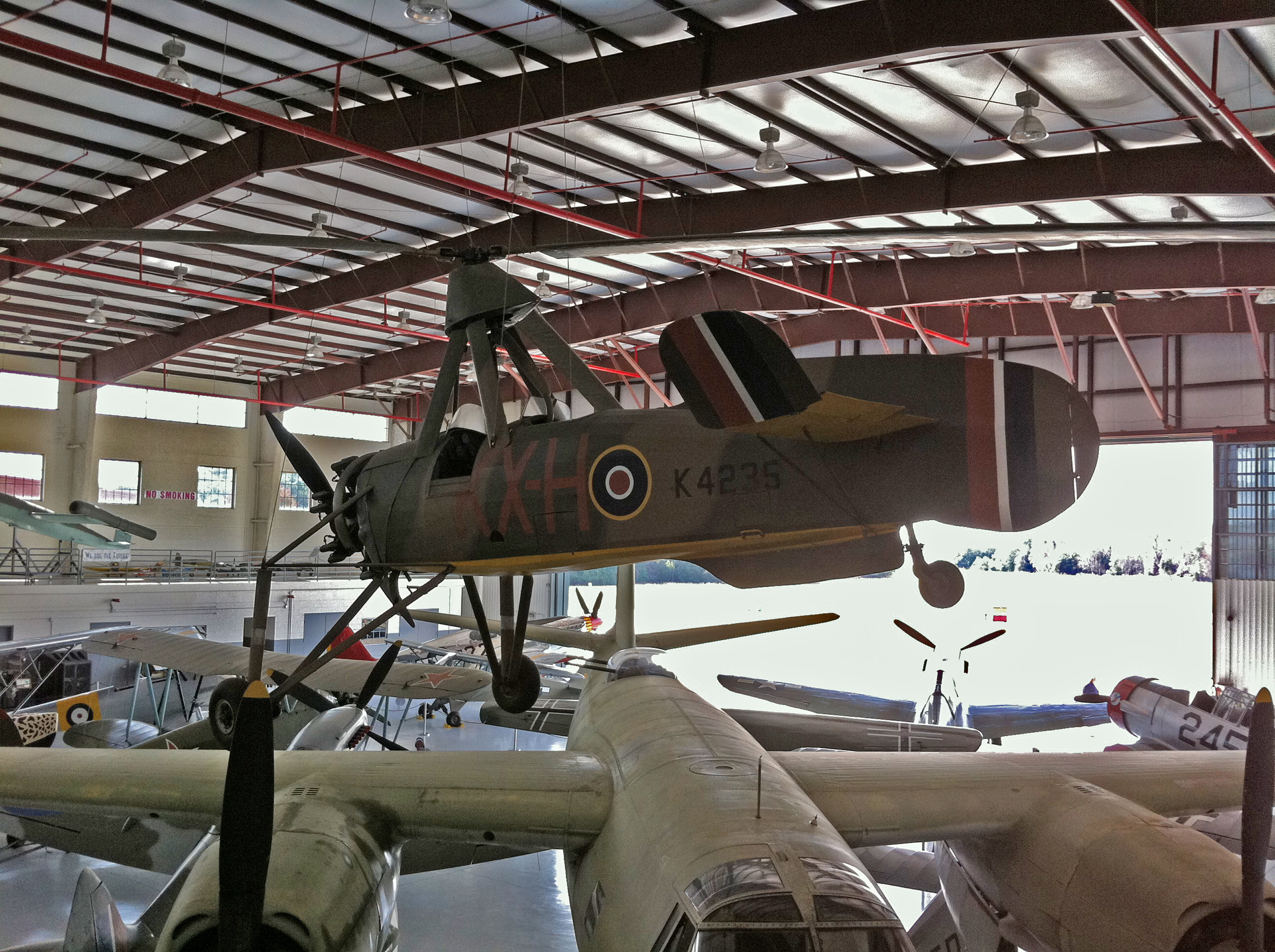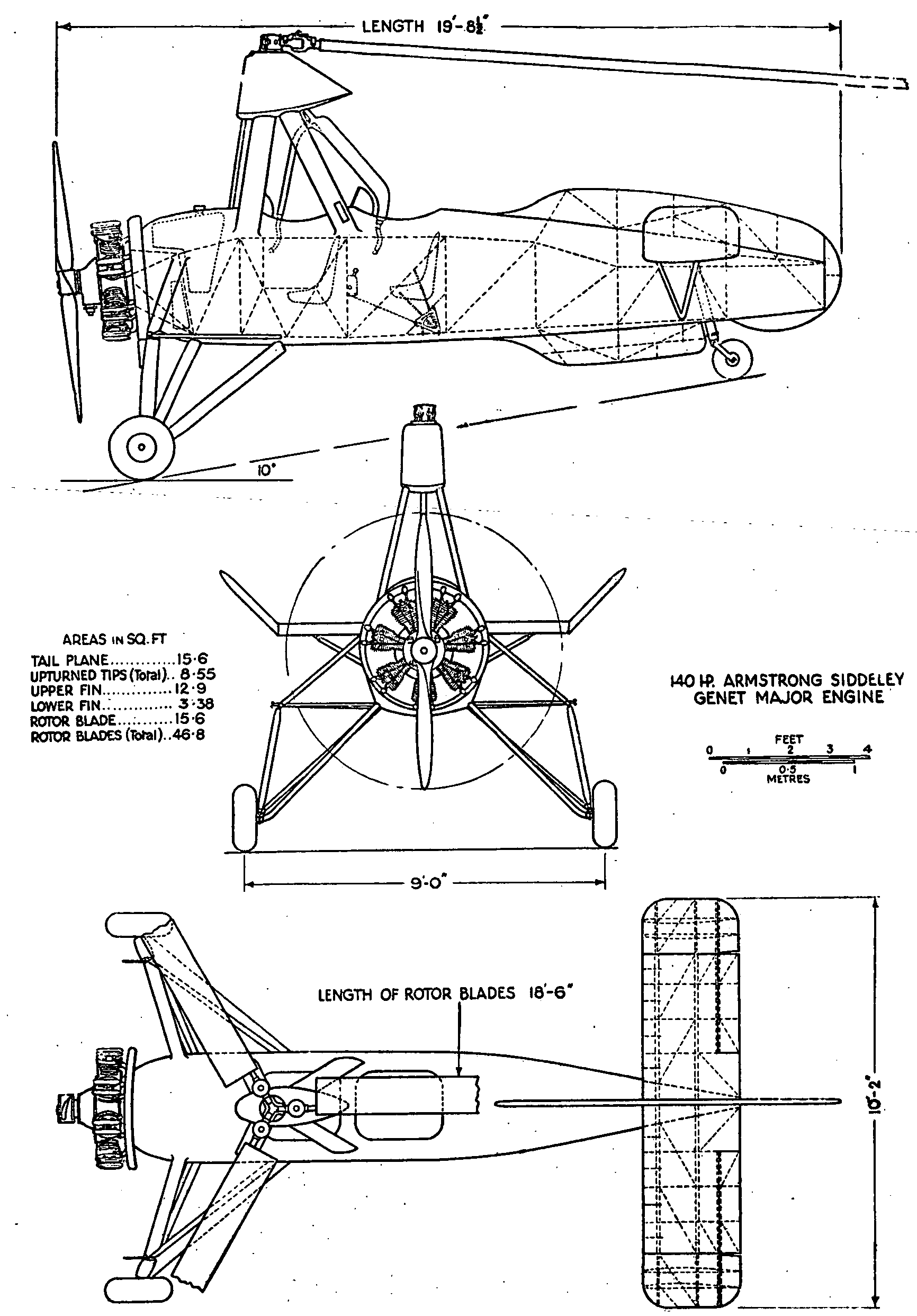Cierva C.30 (5381508461).jpg on:
[Wikipedia]
[Google]
[Amazon]
The Cierva C.30 is an autogyro designed by
 The production model, called the C.30A by
The production model, called the C.30A by
 In September 1935, five members of the Lithuanian Aero Club flew C.30A in the "air train" together with the glider
In September 1935, five members of the Lithuanian Aero Club flew C.30A in the "air train" together with the glider
 ;Argentina
*Cierva C.30A ''LV-FBL'' is on display at the Museo Nacional de Aeronáutica de Argentina.
;Australia
*Cierva C.30A ''VH-USR'' is on display at the Powerhouse Museum, Sydney.
;France
*Leo C-302 ''F-BDAD'' is on display at the Musée de l'Air et de l'Espace, Paris.
;Italy
*Cierva C.30 ''I-CIER'' is on display at the
;Argentina
*Cierva C.30A ''LV-FBL'' is on display at the Museo Nacional de Aeronáutica de Argentina.
;Australia
*Cierva C.30A ''VH-USR'' is on display at the Powerhouse Museum, Sydney.
;France
*Leo C-302 ''F-BDAD'' is on display at the Musée de l'Air et de l'Espace, Paris.
;Italy
*Cierva C.30 ''I-CIER'' is on display at the

Spanish reproduction maiden flight
{{RLM aircraft designations C30 Single-engined tractor autogyros 1930s British military utility aircraft 1930s British civil utility aircraft Aircraft first flown in 1933
Juan de la Cierva
Juan de la Cierva y Codorníu, 1st Count of la Cierva (; 21 September 1895 in Murcia, Spain – 9 December 1936 in Croydon, United Kingdom) was a Spanish civil engineer, pilot and a self taught aeronautical engineer. His most famous accomplish ...
and built under licence from the Cierva Autogiro Company
The Cierva Autogiro Company was a British firm established in 1926 to develop the autogyro.
The company was set up to further the designs of Juan de la Cierva, a Spanish engineer and pilot, with the financial backing of James George Weir, a Scotti ...
by A V Roe & Co Ltd (Avro), Lioré-et-Olivier and Focke-Wulf
Focke-Wulf Flugzeugbau AG () was a German manufacturer of civil and military aircraft before and during World War II. Many of the company's successful fighter aircraft designs were slight modifications of the Focke-Wulf Fw 190. It is one of the ...
.
Design and development
Before the experimental Cierva C.19 Mk V, autogyros had been controlled in the same way as fixed-wing aircraft, that is by deflecting the air flowing over moving surfaces such as ailerons, elevators and rudder. At the very low speeds encountered in autogyro flight, particularly during landing, these controls became ineffective. The experimental machine showed that the way forward was a tilting rotor hub fitted with a hanging stick extending to the pilot's cockpit with which he could change the rotor plane. This was known as direct control and was fitted to the C.30. The production variant, called C.30A in England, was preceded by several development machines. The first production design in the series was the C.30, a radial-engined autogyro with a three-blade, 37 ft (11.3 m) rotor mounted on an aft-leaning tripod, the control column extending into the rear of the two cockpits. The engine was the five-cylinder, 105 hp (78 kW)Armstrong Siddeley Genet Major I
The Armstrong Siddeley Genet Major is a British five-cylinder (later seven-cylinder), air-cooled, radial engine for aircraft, designed and built by Armstrong Siddeley and first run in 1928. It developed 140 horsepower (104 kW). In Royal ...
used in the C.19 series. The fabric-covered fuselage carried an unbraced tailplane, without elevators but with turned-up tips. The port side of the tailplane had an inverted aerofoil section to counter roll-axis torque produced by the propeller. As with most autogyros, a high vertical tail was precluded by the sagging resting rotor, so the dorsal fin was long and low, extending well aft of the tailplane like a fixed rudder and augmented by a ventral fin. The wide-track undercarriage had a pair of single, wire-braced legs and a small tail wheel was fitted. This model flew in April 1933. It was followed by four improved machines designated C.30P (P here for pre-production) which differed in having a four-legged pyramid rotor mounting and a reinforced undercarriage with three struts per side. The rotor could be folded rearwards for transport. The C.30P used the more powerful (140 hp, 104 kW) seven-cylinder Armstrong Siddeley Genet Major IA radial engine.
 The production model, called the C.30A by
The production model, called the C.30A by Avro
AVRO, short for Algemene Vereniging Radio Omroep ("General Association of Radio Broadcasting"), was a Dutch public broadcasting association operating within the framework of the Nederlandse Publieke Omroep system. It was the first public broad ...
, was built under licence in Britain, France and Germany and was similar to the C.30P. The main alteration was a further increase in undercarriage track with revised strutting, the uppermost leg having a pronounced knee with wire bracing. There was additional bracing to the tailplane and both it and the fin carried small movable trimming surfaces. Each licensee used nationally built engines and used slightly different names. In all, 143 production C.30s were built, making it by far the most numerous pre-war autogyro.
Between 1933 and 1936, de la Cierva used one C.30A (''G-ACWF'') to test his last contribution to autogyro development before his death in the crash of a KLM
KLM Royal Dutch Airlines, legally ''Koninklijke Luchtvaart Maatschappij N.V.'' (literal translation: Royal Aviation Company Plc.), is the flag carrier airline of the Netherlands. KLM is headquartered in Amstelveen, with its hub at nearby Amste ...
Douglas DC-2
The Douglas DC-2 is a 14-passenger, twin-engined airliner that was produced by the American company Douglas Aircraft Company starting in 1934. It competed with the Boeing 247. In 1935, Douglas produced a larger version called the DC-3, which b ...
airliner at Croydon Airfield in England on 9 December 1936. To enable the aircraft to take off without forward ground travel, he produced the "autodynamic" rotor head, which allowed the rotor to be spun up by the engine in the usual way but to higher than take-off r.p.m at zero rotor incidence and then to reach operational positive pitch suddenly enough to jump some 20 ft (6 m) upwards.
At least one Royal Air Force (RAF) C.30A was on floats as a Sea Rota in January 1935.
Production
;Avro Avro obtained the licence in 1934 and subsequently built 78 examples, under their model designation, fitted with an Armstrong Siddeley Genet Major IA (known in the RAF as the Civet 1) 7-cylinder radial engine producing . The first production C.30A was delivered in July 1934. ;Lioré-et-Olivier Twenty-five aircraft were built in France by Lioré-et-Olivier as the LeO C.301 with a 175 hp (130 kW)Salmson 9NE
Between 1920 and 1951 the Société des Moteurs Salmson in France developed and built a series of widely used air-cooled aircraft engines.Gunston 1986, p. 158.
Design and development
After their successful water-cooled radial engines, develop ...
9-cylinder radial engine.
;Focke-Wulf
Forty aircraft were built in Germany as the Focke-Wulf Fw 30 Heuschrecke (Grasshopper) with a 140 hp (105 kW) Siemens Sh 14A
The Siemens-Halske Sh 14 was a seven-cylinder air-cooled radial engine for aircraft produced in Germany in the 1920s and 1930s. First run in 1928, it was rated at 93 kW (125 hp).
Applications
* Albatros L 82
* Ambrosini SAI.3
* Ambr ...
7-cylinder radial engine.
Operational history
Of the 66 non-RAF aircraft built in the UK by Avro, 37 appeared at least for a while on the UK register. Some (maybe a dozen) were sold abroad, but others were flown by wealthy enthusiasts and by flying clubs who offered autogyro training. By the end of the decade, private flyers were moving back to the comforts and economies of fixed-wing aircraft and more C.30s moved abroad leaving the Autogyro Flying Club at London Air Park, Hanworth as the major UK user. 26 aircraft were directly exported by Avro. These went both to private owners and to foreign air forces who wish to investigate the autogyro's potential. In 1934, one Spanish Navy C.30 piloted by Cierva landed on the SpanishSeaplane tender
A seaplane tender is a boat or ship that supports the operation of seaplanes. Some of these vessels, known as seaplane carriers, could not only carry seaplanes but also provided all the facilities needed for their operation; these ships are rega ...
''Dedalo'' anchored in Valencia harbor and later made a takeoff.
 In September 1935, five members of the Lithuanian Aero Club flew C.30A in the "air train" together with the glider
In September 1935, five members of the Lithuanian Aero Club flew C.30A in the "air train" together with the glider Schneider Grunau Baby
The Schneider Grunau Baby was a single-seat sailplane first built in Germany in 1931, with some 6,000 examples constructed in some 20 countries. It was relatively easy to build from plans, it flew well, and the aircraft was strong enough to han ...
and the airplane de Havilland DH.60 Moth over the Baltic Sea states: Kaunas
Kaunas (; ; also see other names) is the second-largest city in Lithuania after Vilnius and an important centre of Lithuanian economic, academic, and cultural life. Kaunas was the largest city and the centre of a county in the Duchy of Trakai ...
, Riga
Riga (; lv, Rīga , liv, Rīgõ) is the capital and largest city of Latvia and is home to 605,802 inhabitants which is a third of Latvia's population. The city lies on the Gulf of Riga at the mouth of the Daugava river where it meets the Ba ...
, Tallinn, Helsinki.
Twelve C.30As built by Avro for the Royal Air Force (RAF) entered service as the Avro 671 Rota Mk 1 ( Serials ''K4230'' to ''K4239'' and ''K4296'' & ''K4775''). The twelve were delivered between 1934 and 1935. They equipped the School of Army Co-operation
The School of Land/Air Warfare was a Royal Air Force school based at Old Sarum in Wiltshire. Its purpose was to encourage greater co-operation between officers in the air and those on the ground.
History
The School was originally established at ...
at RAF Old Sarum near Salisbury.
Many of the surviving civil aircraft were also taken into RAF service between 1939 and 1940. In 1940 they equipped 1448 Flt. at RAF Duxford. Later they equipped 529 Sqn. at RAF Halton
Royal Air Force Halton, or more simply RAF Halton, is one of the largest Royal Air Force stations in the United Kingdom. It is located near the village of Halton near Wendover, Buckinghamshire. The site has been in use since the First World W ...
on radar calibration work, disbanded in October 1945, the twelve survivors were sold on to civilian owners.
Most of these did not last long, although two were used for pilot rotary wing experience by Fairey in their Fairey Gyrodyne helicopter programme. Rota Towels kept one ex-RAF Rota airworthy ''G-AHTZ'' until an accident in 1958. ''G-ACUU'', the Imperial War Museum's C.30A exhibit at Duxford had one of the longest active lives. It joined Air Service Training Ltd
The atmosphere of Earth is the layer of gases, known collectively as air, retained by Earth's gravity that surrounds the planet and forms its planetary atmosphere. The atmosphere of Earth protects life on Earth by creating pressure allowing for ...
in 1934, was impressed (as Rota ''HM580'') in 1942, serving with 529 Squadron and returning to civil use by G.S. Baker based at Birmingham's Elmdon Airport
Birmingham Airport , formerly ''Birmingham International Airport'', is an international airport located east-southeast of Birmingham city centre, west-northwest of Coventry slightly north of Bickenhill village, in the Metropolitan Boro ...
airport with its original registration plus the nickname ''Billy Boy'' and was not withdrawn from use until 1960.
After several years of work at the Maestranza Aérea de Albacete, on 15 January 1998, a C.30 was flown again. It was piloted by Lieutenant Colonel Fernando Iglesia. After an accident in June 2000, which almost left the pilot without an arm, the aircraft was handed over to the Museum of Aeronautics and Astronautics, located at the Cuatro Vientos air base (Madrid).
Variants
;C.30: Powered by aArmstrong Siddeley Genet Major I
The Armstrong Siddeley Genet Major is a British five-cylinder (later seven-cylinder), air-cooled, radial engine for aircraft, designed and built by Armstrong Siddeley and first run in 1928. It developed 140 horsepower (104 kW). In Royal ...
radial piston engine.
;C.30P: Improved model, powered by a Armstrong Siddeley Genet Major IA radial piston engines
;C.30A: Main production model, powered by a Armstrong Siddeley Genet Major IA radial piston engine.
;Rota Mk I: RAF designation of the Cierva C.30A.
;Lioré et Olivier LeO C-30: 59 license built Cierva C.30, powered by Salmson 9Ne
Between 1920 and 1951 the Société des Moteurs Salmson in France developed and built a series of widely used air-cooled aircraft engines.Gunston 1986, p. 158.
Design and development
After their successful water-cooled radial engines, develop ...
engines, were supplied to the French Air Force
The French Air and Space Force (AAE) (french: Armée de l'air et de l'espace, ) is the air and space force of the French Armed Forces. It was the first military aviation force in history, formed in 1909 as the , a service arm of the French Army; ...
and French Navy. All LeO C-30 autogyros were destroyed or captured by German forces during the invasion of France in 1940.
;Lioré et Olivier LeO C-30S: Construction number 26 was completed as the sole C-30S.
;Lioré-et-Olivier LeO C-301: Improved C-30s with uprated Messier Messier may refer to:
People with the surname
* Charles Messier, French astronomer
*Éric Messier, former NHL defenseman
*George Messier, French inventor
* Jean-Marie Messier, former CEO of Vivendi Universal
*Marc Messier, Canadian actor from Quebe ...
oleo-pneumatic shock absorbers, flotation devices to facilitate ditching at sea and tripod main rotor support. Six aircraft were delivered to the French Navy by early June 1940.
;Lioré et Olivier LeO C-302:Early autogyros suffered from relatively long take-off runs. To reduce the take-off length two C-301 aircraft were fitted with the equivalent of Cierva's "Jump" head allowing the aircraft to leap vertically after only a very short run. The C-302s were used extensively for testing rotor and undercarriage components but development was eventually abandoned in 1949/1950.
;Focke-Wulf C 30 Heuschrecke: (''Heuschrecke'' (Grasshopper)): 40 aircraft built, each with a Siemens Sh 14A
The Siemens-Halske Sh 14 was a seven-cylinder air-cooled radial engine for aircraft produced in Germany in the 1920s and 1930s. First run in 1928, it was rated at 93 kW (125 hp).
Applications
* Albatros L 82
* Ambrosini SAI.3
* Ambr ...
7-cylinder radial engine.
Aircraft on display
Museo della Scienza e della Tecnologia "Leonardo da Vinci"
Museo Nazionale Scienza e Tecnologia Leonardo da Vinci in Milan, dedicated to painter and scientist Leonardo da Vinci, is the largest science and technology museum in Italy. It was opened on 5 February 1953 and inaugurated by Prime Minister Alci ...
, Milan.
;Netherlands
*Cierva C.30A ''SE-AFI'' is on display at the Aviodrome
The Nationaal Luchtvaart-Themapark Aviodrome (also known simply as Aviodrome) is a large aerospace museum in the Netherlands that has been located on Lelystad Airport since 2003. Previously the museum was located at Schiphol Airport.
.
;Spain
*Cierva C.30A ''XVU.1-1'' flyable reproduction with a Siemens engine is on display at Museo del Aire, Madrid.
;United Kingdom
*Avro Rota I ''K4232'' on display at the Royal Air Force Museum, London, England.
*Cierva C.30A ''AP506'' (smashed wreck) on display at the Helicopter Museum, Weston-super-Mare, England.
*Cierva C.30A ''AP507'' on display at the Science Museum in London, England.
*Avro Rota I ''HM580'' the former ''G-ACUU'' is on display at the Imperial War Museum Duxford, England.
;United States
*Cierva C.30A ''K4235'' on display at Fantasy of Flight, Polk City, Florida.
Military operators
; * Royal Danish Air Force ; *French Air Force
The French Air and Space Force (AAE) (french: Armée de l'air et de l'espace, ) is the air and space force of the French Armed Forces. It was the first military aviation force in history, formed in 1909 as the , a service arm of the French Army; ...
* French Naval Aviation
;
* Royal Air Force
**No. 80 Squadron RAF
No. 80 Squadron RAF was a Royal Flying Corps and Royal Air Force squadron active from 1917 until 1969. It was operative during both World War I and World War II.
Establishment and early service
Founded on 1 August 1917 at RAF Montrose, equipped ...
** No. 529 Squadron RAF
Civil operators
; * Aero Club of Lithuania - single Avro-built C.30A, acquired in 1934Specifications (C.30A)

References
Notes
Bibliography
* Barratt, M. "Talkback". '' Air Enthusiast'' No. 107, September/October 2003. p. 75. * * * * * * * * *External links
Spanish reproduction maiden flight
{{RLM aircraft designations C30 Single-engined tractor autogyros 1930s British military utility aircraft 1930s British civil utility aircraft Aircraft first flown in 1933